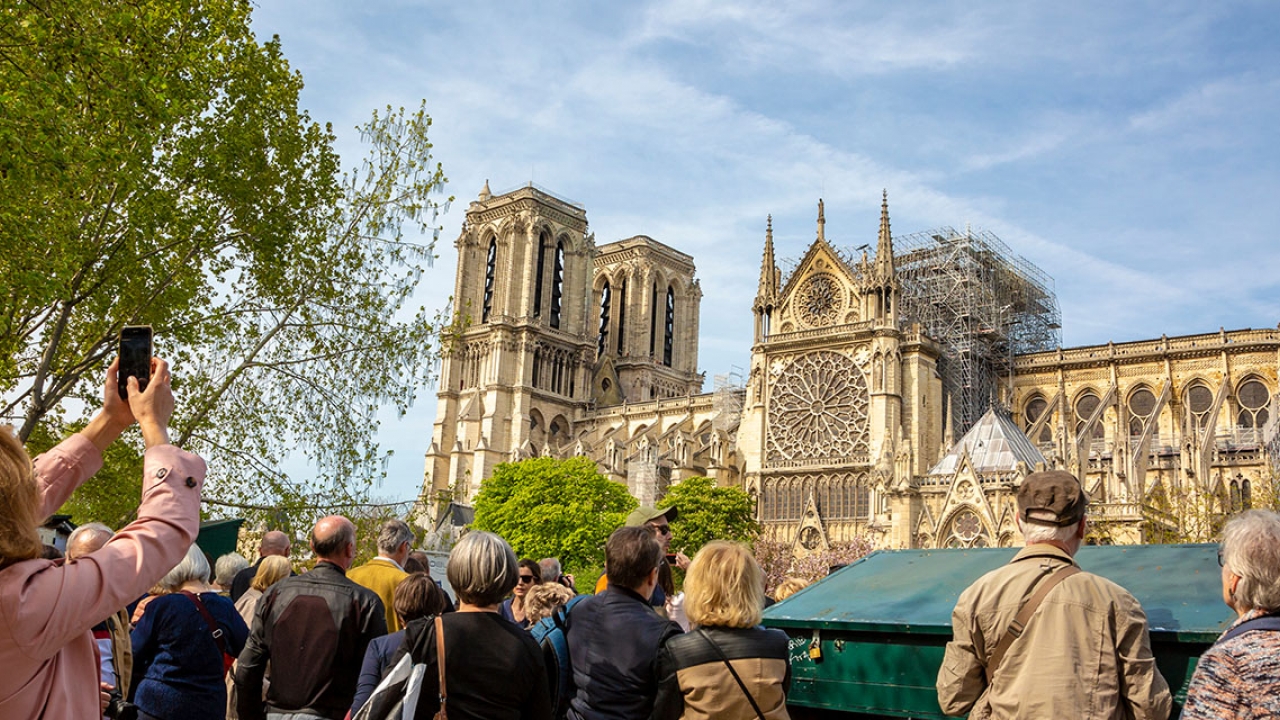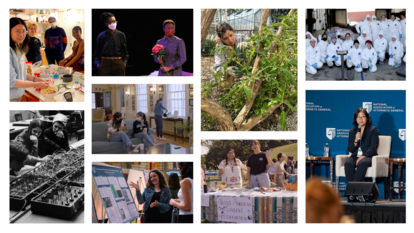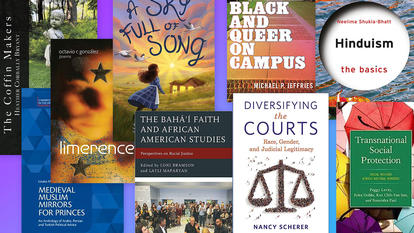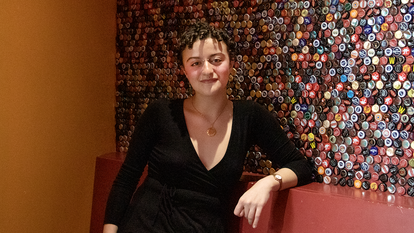In the Aftermath of Fire, Wellesley Professor Discusses What’s Next for Notre Dame

On April 15, a devastating fire ripped through Notre Dame Cathedral in Paris, causing its 150-year old iconic spire to collapse, destroying the roof, and threatening to overtake the entire structure. Since then, debates about how it should be rebuilt and conspiracy theories about the “end of Western civilization” have emerged, and the international community has come forward in droves to donate funds for restoring the church.
In an interview for a ThinkProgress article the day after the fire, Cord Whitaker, assistant professor of English at Wellesley, shared his perspective on the conspiracy theories. He pointed out that many of the improvements to medieval European architecture that were used to create Notre Dame were facilitated by exchanges between European and Islamic architects, and that the racism and Islamophobia that characterize the far right’s discussion of Notre Dame miss the point.
“Many people see that building as a symbol of care and sanctuary for all people, regardless of faith or culture,” Whitaker told ThinkProgress. “To that extent, I do think it should be a global project to take care of it—we run into problems when it becomes viewed only as a sign of Western culture or European culture, [language] that feeds this fearmongering discourse.”
Whitaker recently talked more about Notre Dame’s history and its connection to a multitude of cultures and people.
Q: What has Notre Dame meant to people from various faiths, cultures, and backgrounds?
It is very important to remember that in the Middle Ages in Europe, a church was a place of sanctuary. Let’s say a person was accused of and pursued for committing murder. He might enter a church and claim sanctuary. By custom, and often by law, no one was allowed to pursue him into the church or enter the church in order to arrest him. Even now, churches are usually treated as sacred ground by secular authorities. For instance, there are sanctuary movements in cities around the U.S. where “illegal” immigrants are housed in churches so that immigration agents will not arrest them.
Medieval churches played the role of sanctuary not only for Christians. Anyone could enter them for safety—including, as happened in several notable cases of medieval anti-Semitism, Jews. Of course, the idea was that if you claimed sanctuary you then had to convert. That said, religious identity was no deterrent to claiming sanctuary if the moment of need were dire enough.
While many might expect that Notre Dame Cathedral is a place of sanctuary only for Christians, in modernity it has provided spiritual respite for many a visitor who has been inspired by the beauty and grace of its construction: its rose windows, the way its towers loom and make you feel protected as you pass below them. Even the tourist walking along the Seine on a hot July day in Paris will have experienced the physical sanctuary provided by entering the church’s cool and dark interior.
Q: What elements in medieval European architecture helped create Notre Dame?
There is significant historical evidence that some of Notre Dame’s most iconic features—its flying buttresses—evolved from the pointed arches that have characterized Islamic architecture going back to at least the eighth century. Notre Dame’s construction in the 12th through 14th centuries corresponds with a period of fast and wide-ranging intellectual exchange between Western Europe—what we medievalists call Latin Christendom—and the Muslim world.
Occasioned by the Crusades, this intellectual flowering is sometimes known as the 12th-century renaissance, and it saw the translation from Arabic and Greek sources of most of the Aristotelian corpus and other classical learning that shaped the later Middle Ages and early modern period in Europe. As part and parcel of the philosophical and natural philosophical (what we moderns might call scientific) exchanges came new knowledge in physics, mathematics, and architecture. Texts newly translated into Latin in the period included Aristotle’s Physics and Metaphysics, which significantly advanced learning and scientific endeavors in Western Europe. Additionally, the entire idea of a pleasure garden—the notion that evolved into public parks and horticultural gardens of the sort you find on college campuses, like the Duke Gardens at Duke University—is a medieval borrowing from the Islamic world.
When the crusading Europeans began to travel in large numbers to the Middle East at the end of the 11th century CE, among the many “wonders” they found were geometrically arranged pleasure gardens. It was not long before it became the fashion for wealthy nobility in Western Europe to begin building, maintaining, and enjoying their own versions.
Q: Should Notre Dame be purely recreated as it was in medieval times, or rebuilt with modern modifications and technology?
There are spaces and times for historical accuracy and times for innovation. While we love to revere Notre Dame as a jewel of medieval Gothic architecture, when Notre Dame was built it was innovative. In order to preserve the architectural wonder and spiritual sanctuary that it is, the French government, in whose care the building ultimately lies, ought to rebuild its roof and restore the building on the whole with attention to the most state-of-the-art techniques in fire safety.
After the fire, former New York City fire chief Vincent Dunn stated in the New York Times, “cathedrals and houses of worship are built to burn.” Indeed, a wooden vaulted roof is quite hard to get to in order to extinguish a fire effectively. In its reconstruction, fire retardants and modern fire extinguishing technologies should be put to use. After all, the cathedral’s beauty arose from medieval people making use of the latest knowledge available to them. We honor them if we do the same in order to preserve what we can of their craftsmanship and experience.
Photo: Onlookers by the Seine River pay tribute to Notre Dame Cathedral two days after a fire partially destroyed the famous Parisian landmark. The blaze caused the historic building's roof to collapse and destroyed a spire.



